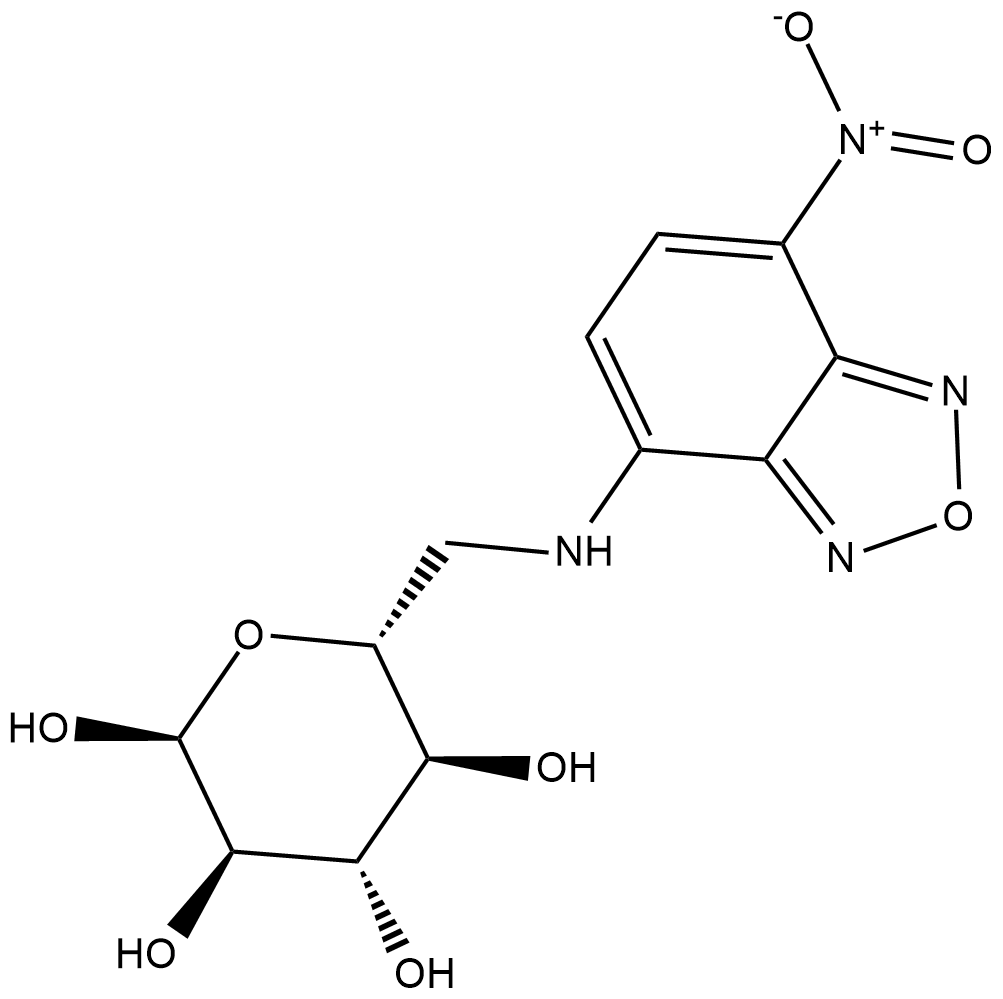6-NBDG (Synonyms: 6-NBD-Glucose) |
| Catalog No.GC18870 |
6-NBDG is a non-hydrolyzable fluorescent glucose analog that is used to monitor glucose uptake and transport in living cells.
Products are for research use only. Not for human use. We do not sell to patients.

Cas No.: 108708-22-1
Sample solution is provided at 25 µL, 10mM.
6-NBDG is a non-hydrolyzable fluorescent glucose analog that is used to monitor glucose uptake and transport in living cells. 6-NBDG has been validated as a probe for the glucose transporter GLUT1 in cells. The fluorophore NBD displays excitation/emission maxima of 465/535 nm.
References:
1. Hansen, T.V.A., Hansen, M., Nejsum, P., et al. Glucose absorption by the bacillary band of Trichuris muris PLoS Negl. Trop. Dis. 10(9), e0004971 (2016).
2. Wang, M.S., Luo, Z., and Nitin, N. Rapid assessment of drug response in cancer cells using microwell array and molecular imaging Anal. Bioanal. Chem. 406(17), 4195-4206 (2014).
3. Zaman, R.T., Kosuge, H., Pratx, G., et al. Fiber-optic system for dual-modality imaging of glucose probes 18F-FDG and 6-NBDG in atherosclerotic plaques PLoS One 9(9), e108108 (2014).
4. Barros, L.F., Bittner, C.X., Loaiza, A., et al. Kinetic validation of 6-NBDG as a probe for the glucose transporter GLUT1 in astrocytes J. Neurochem. 109(Suppl 1), 94-100 (2009).
Average Rating: 5 (Based on Reviews and 3 reference(s) in Google Scholar.)
GLPBIO products are for RESEARCH USE ONLY. Please make sure your review or question is research based.
Required fields are marked with *




















